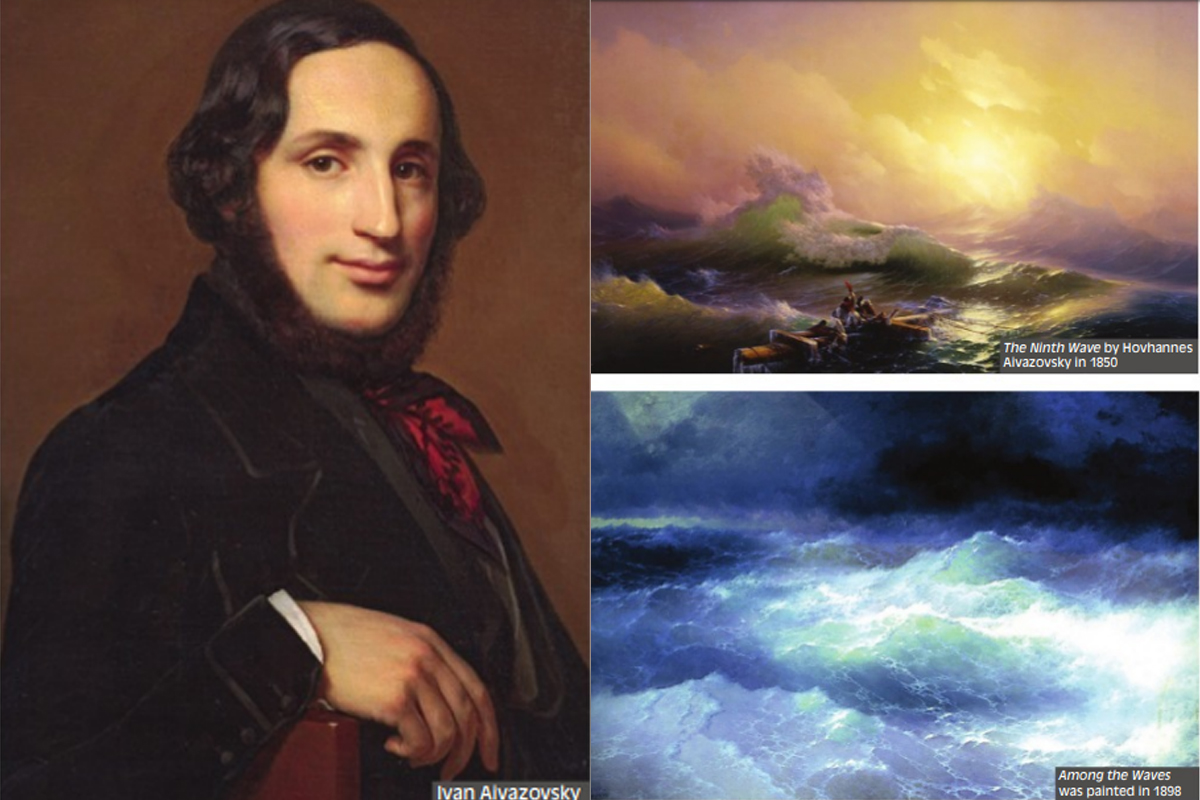What exactly inspires an artist or a writer to depict a particular subject in their work? Emily Bronte’s only book, Wuthering Heights, published in 1847, shocked Victorian England with its portrayal of unbridled passions. It sold poorly, possibly due to the fact that people, at the time, thought writing narratives by women was not at all recommended. The book was almost forgotten and inexplicably, subsequent to Bronte’s demise, it was rediscovered. It is now considered one of English literature’s masterpieces.
Ivan Konstantinovich Aivazovsky, 1817-1900, was a Russian Romantic painter, considered to be one of the greatest artists of marine art. He was born into an Armenian family in the Black Sea port of Feodosia, in Crimea, where he lived for much of his life. In fact, Aivazovsky’s work was popularised by Anton Chekhov. Chekhov wrote a phrase in praise of the artist’s talent by comparing any form of exceptional art to be “worthy of Aivazovsky’s brush.” Critics quoted this phrase by Chekhov when they wished to praise any artist’s perfection for their remarkable talent.
Advertisement
To arrange this master craftsman’s vivid and awe inspiring art one needs to categorise his spellbinding work. Aivazovsky was intrigued by waves on the sea. In 1898, he painted one of his masterpieces, Among the Waves. To the beholder, this picture does in reality give the impression that the viewer is on top of a wave. He continued to be enchanted with the formation and action of waves as attested in 1850 with his next masterpiece, The Ninth Wave. He portrays with superb relevance that the sea does not form a single wave but on the contrary produces a series of them. So is his painting, which literally depicts wave upon wave. Up above are clouds and the sunlight plays on the waters. A boat is seen sailing through the wave. On top of the wave the foamy water curls while beyond, one can see yet another wave building up. One runs out of words to describe the divine and wondrous talent of this accomplished artist. Imagine all the wonders he has perceived of the sea in its different segments. It enlightens us of the many academic dimensions pertaining to this sphere of the marine world and to interpret his art is verily, an education.
Aivazovsky blends his favourite waves in another masterpiece, Stormy Sea at Night, where he uses the moonlight to show a viewer an angry sea where a ship is being buffeted about. He uses the moonlight to perfect other paintings like Sea at night and Lunar night, where he portrays a calm sea. In his brilliance through moonlight, the artist paints waves breaking on the beach with the water sparkling with electric blue lights, the result of plankton when it is disturbed, which is a natural phenomena and is known as bioluminescence, a common term in marine science.
Aivazovsky completed more than 6,000 paintings for the world and an important attribute of his was the use of light. That explains his penchant for moonlight or the Sun and it expands further in one of his paintings, Exploding ship, where he captures a fire on a ship with a vivid illumination. He is perhaps the only artist in history to have portrayed a hurricane and it is depicted by muddy waters from the coast being washed into the sea.
We return to the same thought — what really inspired Aivazovsky to portray the sea in so many of his paintings? His immediate influence was where he lived; a small one storey whitewashed house on a hill from where he enjoyed a panoramic view of the Black Sea. His odyssey began with simple drawings by charcoal. He developed his love for drawing and his family perceived a potential, which could not be ignored. He was destined for the Imperial Academy of Arts in St Petersburg.
Aivazovsky’s work, many of which are seascapes, churn with energy, giving an impression to an admirer that the painting is still very much “alive”. He was Russia’s “Last Romantic”.











